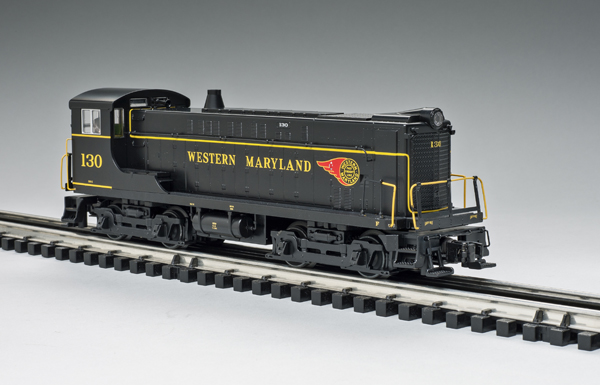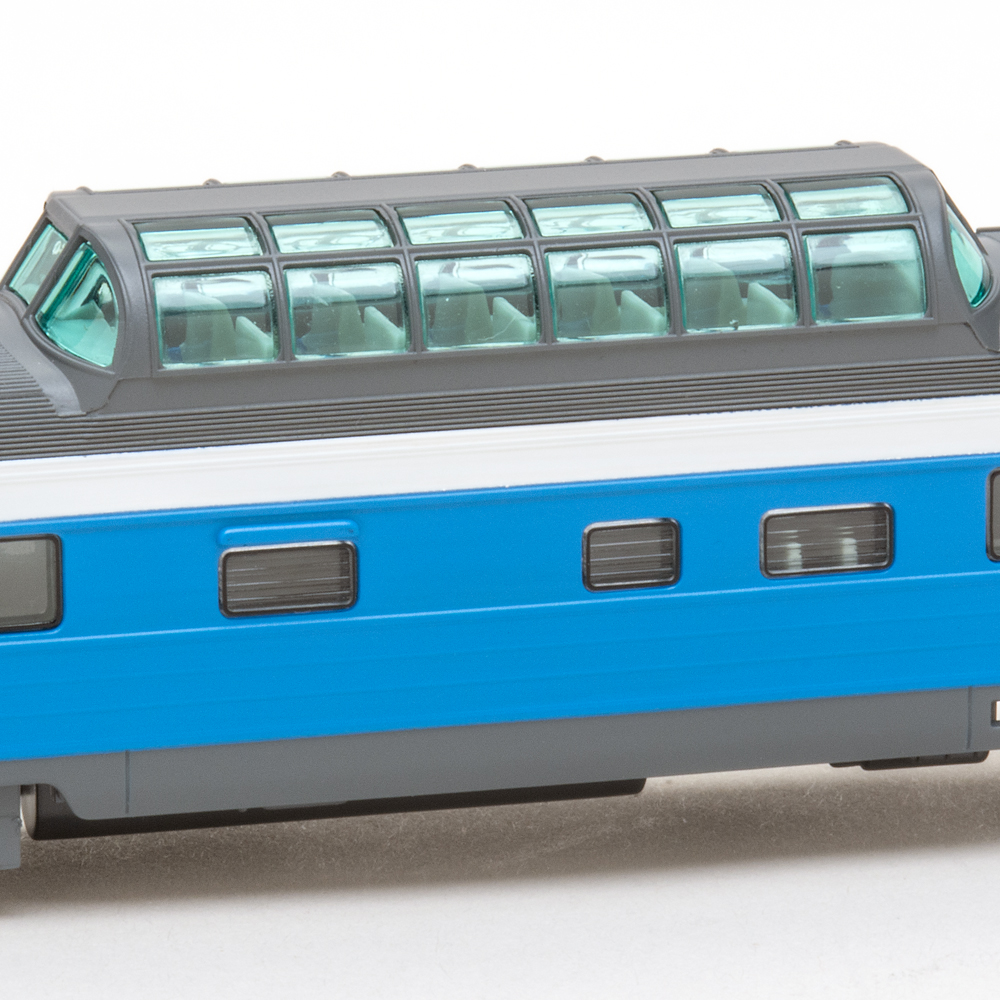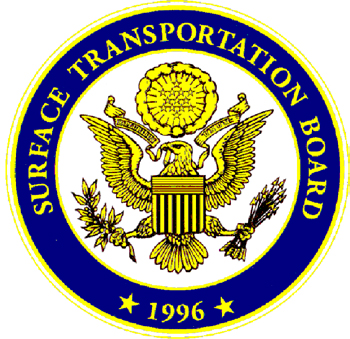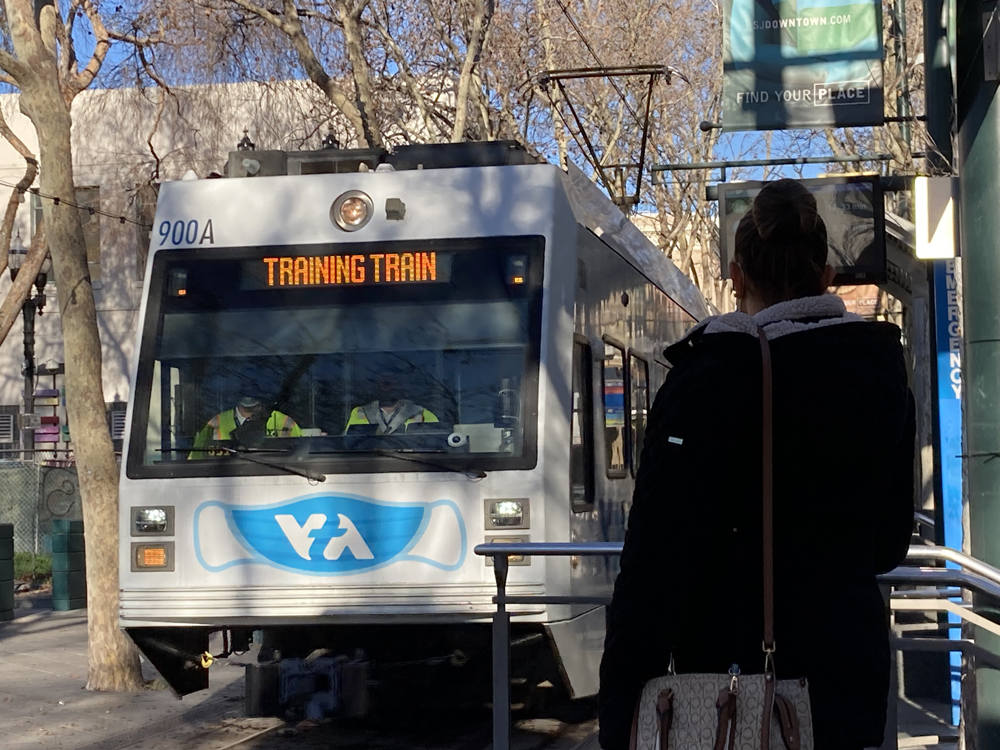O GAUGE PREMIER LINE BALDWIN VO-1000 SWITCHER FROM MTH
Price: $459.95 (No. 20-20786-1) Min Curve: O-31 Low speed: 4.9 smph High speed: 77.4 smph Drawbar pull: 1 lb., 3 oz. Features: Two can-style motors, ProtoSound 3.0 command and sound system, smoke unit, coil couplers Current production road names: Long Island RR, Milwaukee Road, Santa Fe, Seaboard, Western Maryland For more information: www.MTHTrains.com Further reading: “On behalf of Baldwin,” Trains magazine December 1967
It has been said that there is no cause quite as romantic as a lost cause. I suppose that’s why I like oddball power from Alco, Lima-Hamilton, Fairbanks-Morse, and of course, Baldwin.
Baldwin, the venerable steam builder, held diesel power at arm’s length. To a large extent, the firm never quite visualized the threat internal combustion motors posed to steam power.
Baldwin failed to crack the code of diesel locomotive production. Standardization seemed to mean “big things,” not “little things” such as wiring being installed in the same place on every single locomotive of a given type. There didn’t seem to be a serious effort to improve or upgrade the models, and Baldwin seemed rather complacent about marketing. The company simply expected regular steam customers to continue buying its products.
The VO-1000 was a workmanlike locomotive using the De La Vergne engine (a Baldwin standard from 1936 through the end of its diesel locomotive production). Baldwins did have a reputation for having reliable, but expensive to replace, components. They were also known for excessive down time when in for scheduled maintenance, as compared to easier-to-maintain models from the competition. It often took more time for disassembly and re-assembly than other locomotive brands. By many accounts the diesels also leaked a lot of oil. In the world of standardization, Baldwin was the odd man out.
Six Baldwin VO-1000s still exist, including a Western Maryland unit.
Opening the box
The nifty thing about the VO-1000’s carbody is that it pretty much has the same style as most of Baldwin’s yard switchers, with key features including a squarish shell, a radiator on the end, and a cab with big windows. So the O gauge model from MTH Electric Trains has a clean and functional design that doesn’t stray far from designs used by Alco and the General Motors.
The cab has double-pane windows on the sides and door end. There are safety yellow handrails and grab irons. A headlight is mounted above the door. The two-man crew faces down the hood (there is an “F” for front painted on the long end), and the interior is painted green.
What I liked most about the body was the combo of the large radiator on the long hood capped off by a big headlight on top. The headlight looks larger than a typical diesel’s light, almost as though it’s an addition from Baldwin’s pile of leftover steam locomotive components. There is also a grab iron running side to side.
The sides are fairly flat, which is great for applying decoration. But run your finger along the sides and you’ll be able to feel the doors and louvers cast into it. There is a handrail running along the top of the engine compartment, though it’s a tad hard to see. It is painted black, while there is a yellow stripe running just below and behind it.
The running boards and pilot decks all have safety tread texture. While the pilots are fairly stark, I did like the brakeman’s steps. They jut out slightly ahead of the body, versus hanging straight down on most models of older power. These steps also have safety tread on them.
Up top, many VO-1000s had four stacks; MTH modeled the single-stack version. There are cast-in access hatches and a screen just behind the headlight.
Decoration includes yellow striping, and engine numbers, The stand-out graphic element is the Western Maryland’s fireball logo. There are also finely executed nomenclature items, such as the locomotive class and “Tested BLW,” on the brake line air tank.
On the test track
There is nothing much to report on this O gauge model: It ran well, sounded good, and even generated a nice bit of smoke. We ran it through all the switches on our test track, and it handled them like a champ. The diesel was responsive in all speed ranges, and the ProtoSound features we checked all worked. We had no surprises, and that is a good thing.
Our speed range was 4.9 to 67.4 scale miles per hour. Our drawbar pull was 1 pound, 3 ounces.
As I like to note, the startup sounds for old Baldwins always sound like the locomotive is going to rattle itself apart. They get two thumbs up for making me check the layout, looking for O scale pistons that might have flown off during startup!
If you have too many EMD switchers, this new O gauge Baldwin VO-1000 diesel from MTH is a reliable, well-running model sure to add a bit of “different” to the look of your fleet.














